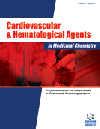
Full text loading...
Hypoglycemia and anemia are associated with diabetes mellitus. Medicinal plants and orthodox drugs have been used for the management of this disease. This study aimed to validate the ethnomedical claims of Terminalia catappa Linn. leaf extract in reducing hyperglycemia and hematological potentials in alloxan-induced diabetic rats and to identify likely antidiabetic compounds.
Ultra-high-performance liquid chromatography was used to identify the various phytochemical constituents. Male Wistar rats were randomly divided into five groups containing 6 rats per group. Group 1 (control) received 0.2 ml/kg of distilled water, group 2 received 130 mg/kg of T. catappa aqueous extract, groups 3-5 were diabetic and received 0.2 ml/g distilled water, 130 mg/kg T. catappa extract and 0.75 IU/kg insulin respectively for 14 days. Hematological parameters were measured and an oral glucose tolerance test was carried out using 2 g/kg body weight glucose. A histological analysis of the pancreas was done.
Twenty-five compounds identified as flavonoids, phenolic acids, tannins, and triterpenoids were detected. The blood glucose levels were significantly (p <0.05) elevated in DM groups but were significantly (p <0.05) reduced following Terminalia catappa leaves extract to DM groups. There was s significant (p <0.05) increase in insulin levels improved hematological parameters (RBC, WBC, and platelets), and increased islet population.
These results suggest that T. catappa extract has hypoglycemic, insulinogenic, and hematopoietic potentials in diabetic condition and offer protection to the pancreas which could be attributed to the phytochemical constituents thereby justifying its use in traditional therapy.

Article metrics loading...

Full text loading...
References


Data & Media loading...

